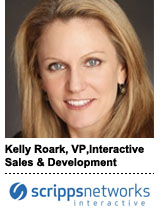 As major publishers adopt programmatic methods to boost efficiency and cost-savings, one thing keeps them from putting more valuable inventory up for bid: The perceived lack of transparency in pricing. Consequently, an Interactive Advertising Bureau (IAB) task force made up of publishers has been working on guidelines to clear up the fees and better define the types of CPMs being bidded on.
As major publishers adopt programmatic methods to boost efficiency and cost-savings, one thing keeps them from putting more valuable inventory up for bid: The perceived lack of transparency in pricing. Consequently, an Interactive Advertising Bureau (IAB) task force made up of publishers has been working on guidelines to clear up the fees and better define the types of CPMs being bidded on.
The report, titled Transparency Is The Key To Programmatic Success (pdf), found advertisers often pay “significantly” higher CPMs for programmatic non-guaranteed buys than a publisher clears, not counting fees.
“The lack of transparency draws comparisons to when ad networks became a large player and for many publishers, that’s dirty pool,” said Doug Fleming, VP of multi-media sales at USA Today and a member of the IAB Programmatic Publishers Task Force.
Although the lack of transparency has been issue for a while, Fleming said it persists because publishers use too many partners and have many different statements of value. And in some cases, opaqueness benefits the vendors. “It’s such a new space, where one advance in technology can have dramatic change on the trajectory of your company, so I believe there is fear with exposing areas deemed as ‘competitive advantage,'” Fleming said.
The transparency problem has intensified because publishers are encouraged – and more willing – to place reserved inventory through programmatic channels. Because automation was initially used around unsold inventory, lack of transparency wasn’t a concern. But for “premium” inventory, publishers aren’t willing to risk their CPMs being driven downward.
Since there are no standards, the level of transparency varies from situation to situation, said Tina Weyand, SVP, revenue strategy, operations & sales enablement for Demand Media.
“We rely on the relationships we have with demand-side platforms and agency trading desks for information; but this is done outside the actual transacting system,” Weyand said. “In its current state, the transaction ecosystem can lead to a scenario in which a deal does not clear despite the predetermined needs of both the brand providing the budget and the publisher offering the inventory. The buyers and sellers do not see why the deal did not clear, or where in the transactional chain the deal was terminated without quite a bit of work with the intermediary parties.”
In a hypothetical offered by the IAB’s report, a buyer purchasing $10 CPM placement is likely getting inventory a publisher values at $4-6 CPM, with undisclosed fees cobbled into the final price. Although buyers and sellers usually factor these hidden costs, the price increase undermines the trust in what’s being bought and sold.
“The problems with transparency haven’t necessarily gotten worse; rather the adoption of programmatic auction has increased, and challenges become more pronounced at scale,” said Kelly Roark, an IAB taskforce member and VP of interactive sales & development at Scripps Networks Interactive. “Without transparency, publishers and advertisers have limited insight into the value chain so we risk mis-valuing inventory, deal ROI and the programmatic auction opportunity in general.”
There’s no quick fix to this complex challenge, Fleming and Roark said. The IAB taskforce intends to highlight the upsides to transparency for both sides of the ad divide.
“Near-term, we are paying attention to providers who step up their transparency to better showcase the value of our digital assets and their role – both monetary and technical – in optimizing transactions,” Roark said. “Longer term, we are optimistic that more service providers will follow suit to a degree we can establish standards for consistency cross-marketplace. Then, we are all better equipped to deliver on programmatic auction’s promise of an efficient marketplace for inventory valuation, through which all buyers can get the right audience at the right place at the right time.”
Fleming believes the persistence of the transparency issue reflects the complex vendor landscape, despite the growing sophistication around operations like bidding and data visualization. For the most part, it’s up to publishers to guard the valuing of their CPMs and to try to rely on more programmatic direct until the those additional points in the ad sales chain consolidate or become extinct as the demand rises for one-stop shops for data and other platform services.
“We, the digital industry create acronym’s for everything that are completely self serving; DSPs, DMPs, SSPs, PMPs, etc. – it’s like learning a second language,” Fleming said. “It’s not just the advertiser taking swings at your CPM’s; there are several others taking cuts on your margins and you don’t even know how much, what they are from whom they’re coming from. It’s Thunder Dome. Transparency is a must.”
For Demand Media’s Weyand, the solution won’t come until the programmatic market scales and automated sales reach its full operational and strategic potential. Along the way, the industry must adopt standardized visibility into fees from all transacting parties, and must conduct deals on the basis of net CPMs and net inventory value as well as the targeting being used, she said.
“Until these changes are implemented, we are addressing the challenges of limited transparency through a process of trial and error, and must be diligent in vetting the parties with whom we work,” Weyand said. “The ultimate goal must always be successful execution of transactions – meeting the goals of the purchasing brands while realizing the efficiencies of a scalable programmatic solution.”













